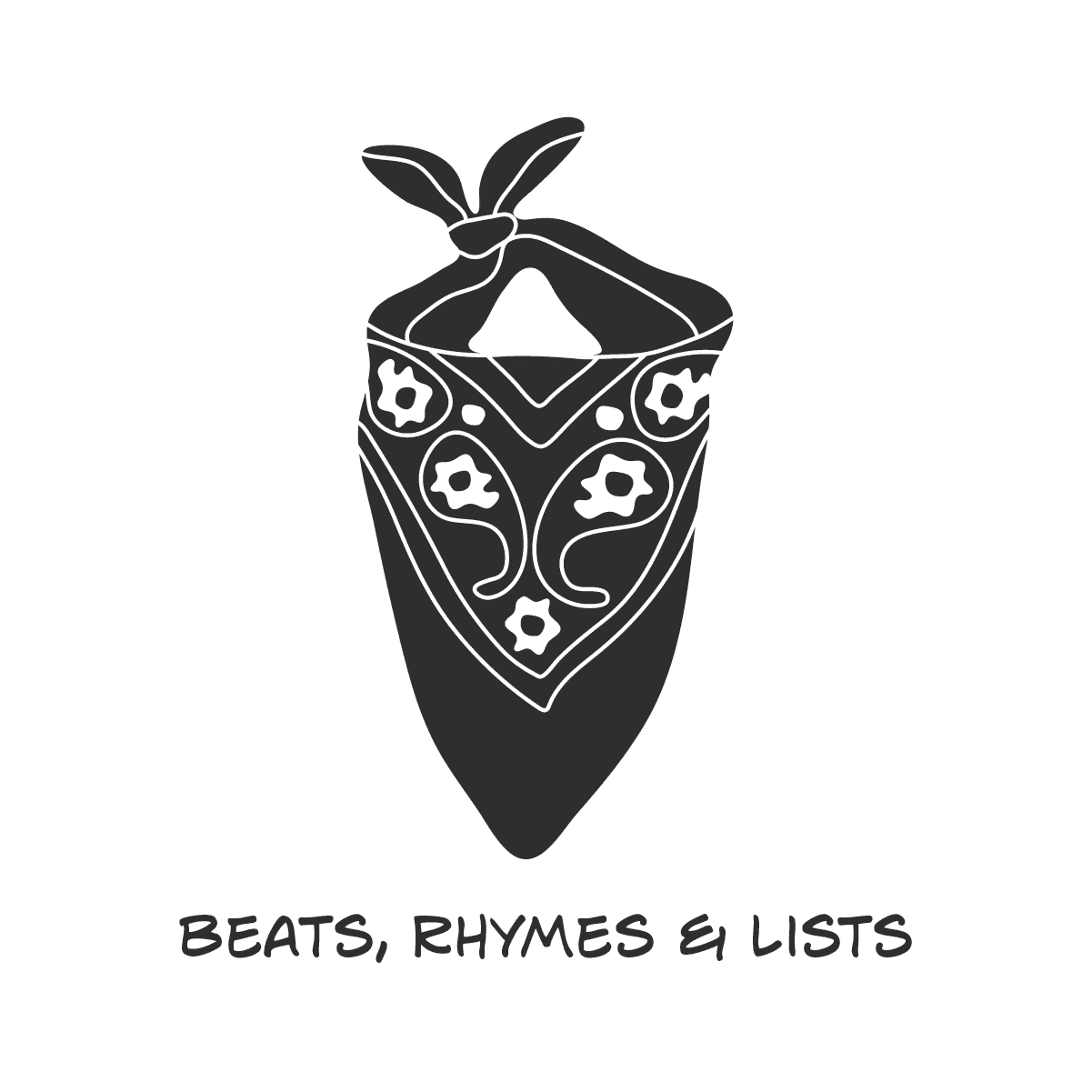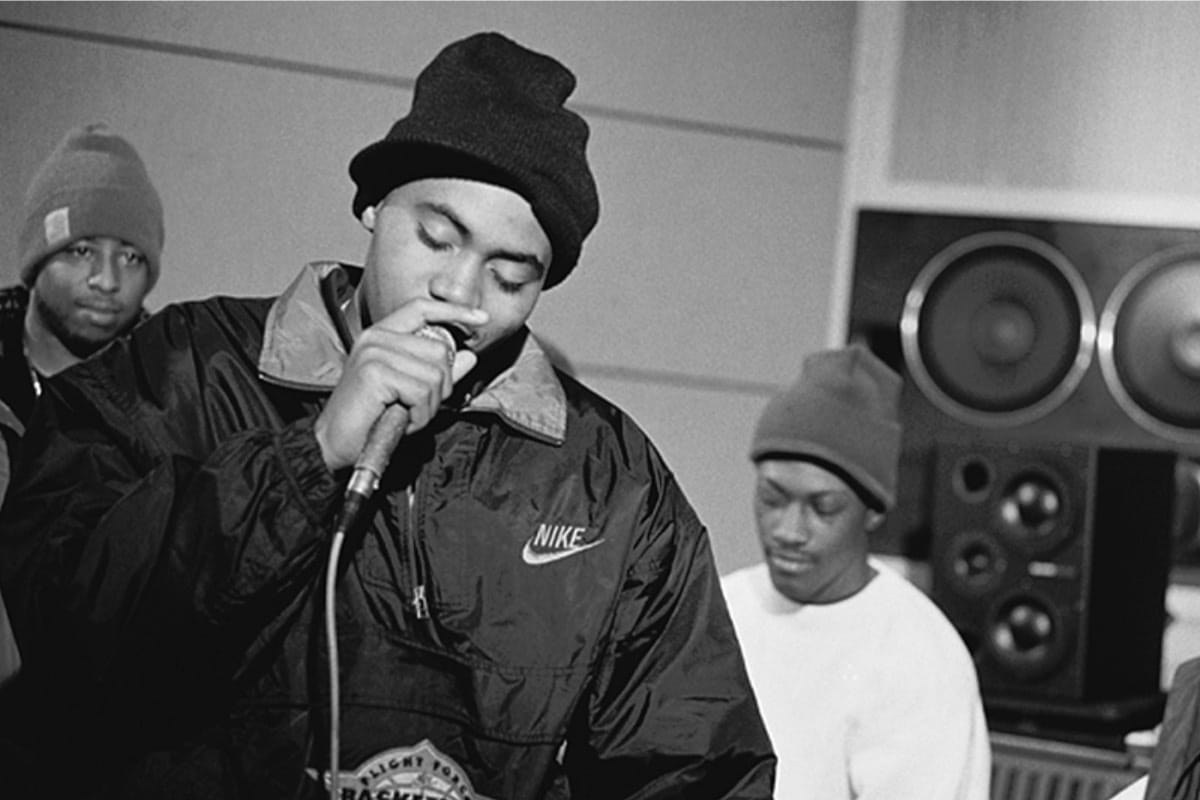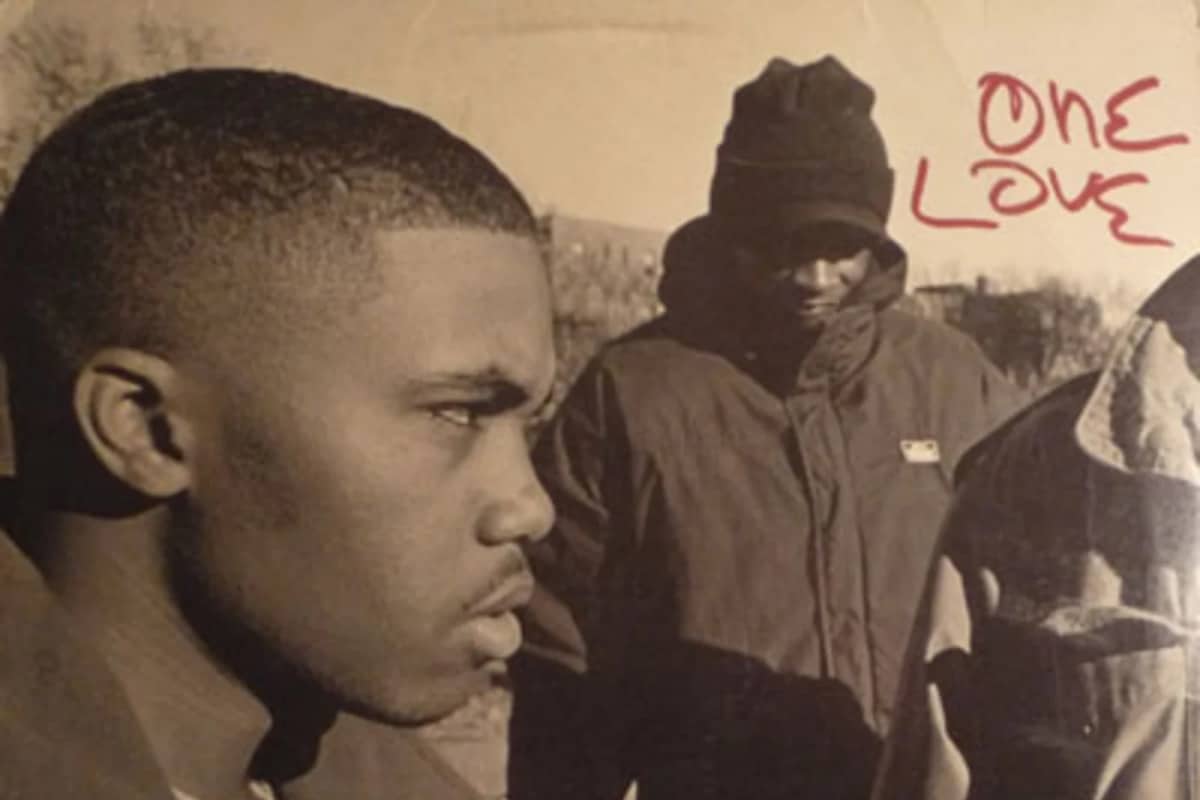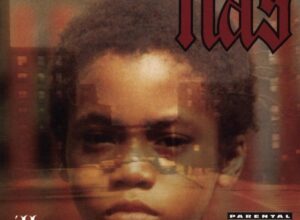Nas, that Queensbridge prodigy who lyrically attacked the mic with the ferocity of a seasoned vet on his groundbreaking debut ‘Illmatic’, continues to cement his legacy in the annals of hip-hop history with his latest project, ‘Kings Disease III’. Just as he did with ‘Illmatic’ and ‘It Was Written’, Nas again demonstrates his unsurpassed storytelling skills and lyrical prowess on this masterpiece.
His unique ability to infuse social consciousness with street wisdom is but one thread in the intricate tapestry of his artistry, evident in tracks like “Ghetto Reporter” and “Thun”. Nas continues to paint vivid scenes of the ‘hood, while also shedding light on broader societal issues through potent tracks like “Recession Proof” and “Don’t Shoot”. The interplay between raw emotion and stark reality in songs like “Once a Man, Twice a Child” and the evocative bonus track, “Til My Last Breath”, offers listeners a deeper insight into the man behind the mic. Nas, with his third installment of the ‘King’s Disease’ series, solidifies his place as not just a chronicler of the urban experience, but as a sage whose words echo far beyond the confines of the genre.
So let’s get into it. From the piercing truths of “Ghetto Reporter” to the poignant reflection in “Til My Last Breath”, here we breaking down every songs on ‘Kings Disease III’ by ‘Nas’.
1 Ghetto Reporter
The track starts with a powerful critique of the judicial system, reflecting Nas’ perspective on its unfairness to Black individuals. He then dives into a critique of the music industry, targeting the culture vultures who exploit Black artists and their work. Nas uses his experiences to demonstrate the damaging effects such exploitation can have, often leading to depression and a sense of being trapped in the industry.
Moving into a more personal narrative, Nas reflects on his journey in the music industry. As the ‘ghetto reporter,’ he speaks on his career progression from being the first project rapper to achieving triple platinum status, all while upholding his New Yorker pride. The recurring motif of King’s Disease indicates the inevitable challenges that artists face in the music industry, but it also signifies an evolution—finding a new formula that works for oneself. Nas ends the track by appreciating his ‘real’ fans, indicating his desire to have a cross-generational fan base in the future, maintaining his relevance in the world of hip-hop.
2 Legit
Nas explores his journey from a hustler to becoming a revered artist by underlining his transition from the streets to legitimacy. The early line “Who’d have thought I’d go legit” encapsulates the lyrical theme: a reflection on how Nas navigated a challenging path leading to success.
The song carries a message to the black community, encouraging entrepreneurial spirit and ownership. Nas is advising the next generation, asserting that street hustles could be transformed into legitimate businesses. His mentioning of ‘black homeowners’ is a call to his community to acquire land and assets, asserting their space in society.
Nas doesn’t shy away from reflecting on his past misdeeds, acknowledging his wrongs while celebrating his transformation. Overall, “Legit” delivers a potent message about personal growth, advocating for decision-making that leads to more sustainable and rewarding paths, while also highlighting the systemic challenges faced by marginalized communities.
3 Thun
Littered with local references like Ronny Bumps, Grandmaster Vic, and the Disco Twins, Nas weaves a rich tapestry of Queens’s local color. He chronicles shared experiences, trials, and tribulations, embodying the spirit of survival and defiance that’s deeply embedded in the streets.
He underscores the challenging reality of a hustler’s life and the collective yearning for success, epitomized in the recurring phrase, “Queens in the house”. The song is a testament to his journey, a nod to his contemporaries like Jay-Z (Hova) and a critique of the cycle of violence and struggle. It’s a raw, unfiltered snapshot of Nas’s life, a message that transcends boundaries and resonates with anyone with a story to tell.
4 Michael & Quincy
The track infuses a slick array of references from the darkest street corners to the glamour of high-end timepieces. Nas also ain’t holding back in his critique on the state of America, matching social commentary with gangsta undertones, showing a profound understanding of the intricacies of the game.
Then you got the way Nas breaks down the essence of his art form, likening the impact of his words on eardrums to a virgin experience. It’s all about the survival and strength of character Nas embodies, overcoming the harsh realities of the street while keeping his cool. He interweaves memory and present, maintaining his authenticity with a reference to his early days rocking a jean jacket, headband, and Nikes. Overall, “Michael & Quincy” is proof that despite the odds, the King’s Disease III is far from needing a cure. Nas is far from done weaving his lyrical magnum opuses.
5 30
The title refers to his seasoned career, spanning over three decades – a rare feat in the often fickle world of hip-hop. He boasts about his rise from the rough blocks to the sandy beaches, a metaphorical journey that mirrors his own from challenged beginnings to rap royalty. Nas also touches on his personal life, his past relationships with renowned beauties and surviving divorces. These trials have not broken him but led him to a point of peace and understanding.
The song serves as an assertion of Nas’s continued relevance and supremacy, while also throwing subtle shade at others who may question his staying power. He compares the current hip-hop scene to a drill warfare, hinting at the volatile state of today’s rap climate in contrast to his steady reign. Nas mentions his potential collaboration with DJ Premier, an iconic producer, hinting at an unforgettable masterpiece in the works. The mention of Pete Rock, another legendary figure in hip-hop, seems to hint at unresolved tension. He concludes the song in a resilient spirit, mirroring his undying flame in the sprawling landscape of hip-hop.
6 Hood2Hood
Nas paints an authentic picture of the ‘hood life, weaving narratives around crime, coonery, and the game hustle that hardens boys into men. The track feels like a travelogue through America’s underserved terrains with Nas at the helm, spitting truth and calling out the duplicity of societal systems. Yet, he reminds his listeners about the underlying unity that binds us all across diverse hoods, despite our differences. Encapsulating the life experiences of many in black urban communities, ‘Hood2Hood’ delivers unfiltered, honest insights like only Nas can.
7 Recession Proof
The Queensbridge lyricist cleverly interweaves his personal narrative with broader issues of social justice, bringing to light the systemic mechanisms that keep the ghetto in financial peril. Nas underlines the notion that no one is truly “recession-proof” but emphasizes the importance of individual growth and self-investment as a counteractive measure.
Contrasting the grim realities of street life with the glamour of the rap industry, Nas showcases how far he’s come, using his upbringing and his hustle as a testament to his resilience. He contextualizes success within the cyclical nature of poverty and incarceration, suggesting success is not a singular state but a trajectory of constant change and adaptation.
Through intelligent wordplay and intricate storytelling, Nas navigates the tension between material success and ethical integrity, questioning the societal values that prioritize wealth accumulation over community wellbeing. The chorus serves as a reminder that personal growth outpaces material acquisition. Wrapping it up, “Recession Proof” serves as a powerful commentary on the state of socio-economic disparity, articulated through Nas’ unfiltered gaze on the struggles and victories of American Blackness.
8 Reminisce
Nas reflects on the circumstances and the harsh realities that shaped him, juxtaposing his embattled journey with the present success he’s savored. He touchingly acknowledges that his path could have easily led to death or failure for any weaker spirit. Nas also boldly discards the nostalgia that often plagues artists of his stature, choosing to acknowledge his past but not dwell on it. He asserts his contemporary relevance, chiding those who are still stuck in the 90s and refusing to adapt. The lyrics paint a vivid picture of an artist who has managed to maintain his lyrical prowess while evolving with the times, making “Reminisce” a lyrical manifestation Nas’ resilience and evergreen relevance in the hip-hop scene.
9 Serious Interlude
With his lyricism, Nas brings to light an intimate narrative featuring a woman and her interaction with him, despite being married to another man. Through the lyrics, Nas unravels a tale of temptation, desire, and tension that feels all too real, traced on the backdrop of an urban environment. One could say it’s a cautionary tale about the risks of infidelity and the moral dilemmas it incites. Nas masterfully blends his own reflective commentary with a detailed, unfolding narrative, giving his listeners not only a story to follow, but also insights about the human psyche and the complexities of emotional attachments. He cleverly sprinkles sarcastic undertones and a trademark street-smart edginess, adding to the song’s rhythmic appeal and substantiating its overall gravity. All these make “Serious Interlude” one of the standout tracks in “King’s Disease III”.
10 I’m on Fire
This track is a testament to his longevity, shouting out the same fire he bought to the “Hate Me Now” video, signaling he’s still got it. The reference to the iconic video sends a clear message; Nas is that ever-burning flame in hip-hop. Throughout the song, he exhibits a relentless, passionate, and fiery persona that’s hard to extinguish.
Subtly addressing his detractors, he refutes the blackball myth and unpacks his unshakeable status as a rap icon. The man is all about the hustle, putting his heart into his rhymes, and heating the block as he steps on it. Metaphorical gems like “tryna walk in my soles is like bare feet on hot coals” underline his struggle and unmatched journey in the game. Questions about his faith and his uniqueness further demonstrate Nas’ introspective nature, dissecting societal views on identity and belief systems.
Ultimately, “I’m on Fire” is Nas’ assertive declaration of his irreplaceable status in the genre – it’s a statement that he ain’t going nowhere, and he’s still got that fire burning bright.
11 WTF SMH
Nas, Queensbridge’s finest, does what he does best: paint vivid pictures with his lyrics. He opens up with a commentary on his flashy life and material possessions, but quickly juxtaposes that with his keen observation of societal malaises surrounding him. Nas delves into the depths of street life, discussing the trap culture and the disillusionment of the ‘hood. In the same breath, he critiques the cut-throat competition and envy permeating the hip-hop scene.
The track is more than just a lyrical expose; it’s a thoughtful musing on the struggle of Black America. Nas ruminates on systemic oppression, the self-destructive tendencies it engenders, and the subsequent effects it has on the community. He tackles the dichotomy of his life – a successful rapper and an observant critic of society. Throughout, Nas makes sure to keep it 100 by balancing his street wisdom with the reality of living as a successful, influential figure in society.
Intense and introspectively raw, “WTF SMH” gleams with Nas’ signature lyrical prowess and the seasoned wisdom of a hip-hop veteran. It’s Nas continuing his role as a ‘ghetto reporter’, narrating the street chronicles but also questioning his audience – why aren’t they proud of his achievements?
12 Once a Man, Twice a Child
The track is a rich exploration of Nas’ past, contrasted with his present. A confession of his growing fears and those spur-of-the-moment youthful decisions that now, when he reflects upon them, seem oblivious to danger. Nas presents this cycle of life as a return to infancy – the ‘twice a child’ symbolism. It poignantly captures the realities of growing old, the swapping of physical prowess for wisdom, and the inevitable dependency that comes with age. Nas uses this canvas to pen a vivid picture of life with its highs and lows. He even throws a hint on the inevitability of changing relationships, an ode to his new love despite cherishing his old one. As usual, Nas layers his lyrics with deep reflections on life, death, and the world. “Once a Man, Twice a Child” is Nas’ late-career lyrical masterpiece, fusing reflections of a storied past with an acknowledgement of constantly evolving personal growth and the time that waits for no man.
13 Get Light
As the title suggests, getting lit symbolizes enjoying life to the fullest while being mindful of his environment. The lyrics reflect Nas’s appreciation for strong women and real brothers, giving props where props are due. An integral part of the verse describes Nas doubling his digits while watching girls double dutch, projecting an image of him rising in power and influence while keeping deeply connected to recreational activities in his community.
The track is a love letter to Nas’s New York City, painting vivid visual narratives of long, bustling blocks where all sorts of bosses walk the walk. Nas shifts between luxury and street life, showing that regardless of his bourgeoisie experiences, he always comes back to the hood. Through the lines of this lyrical masterpiece, Nas reaffirms his legacy, reminiscing about his early days of playing basketball and his rise in the charts at a young age. As he states, the sun doesn’t even know it’s a star, a profound metaphor that highlights the importance of staying grounded and appreciative of past struggles despite the fame and success.
14 First Time
He talks about the first time listeners might have stumbled upon his music, pausing to consider whether it was a shared tape from an older sibling or perhaps a surprise find at a decrepit club. Nas remembers his own beginnings flanked by both imperfect performances and timeless hits. He delves into the duality of his life as he juggled his career with Columbia Records and the harsh realities of street life.
Nas also shrewdly addresses critics who often harp on his beat selections, while he focuses more on the stories his lyrics tell. The song comes across as a letter to both seasoned fans and new listeners – with Nas hoping to strike a chord with the newer generation, encouraging them to appreciate the depth of his lyricism. The track concludes with references to legends like Slick Rick, Tupac, Biggie, and Michael Jackson – a nod to the enduring power of first impressions in music.
15 Beef
He paints a vivid picture of how ‘beef’ impacts people’s lives, in both personal and larger socio-political contexts. Nas masterfully illustrates ‘beef’ as an unavoidable entity, creeping and causing havoc in communities, escalating petty arguments into physical fights, creating tension between nations, and turning friends to foes. The lyrics also emphasize how ‘beef’ feeds on ignorance and thrives in an environment of miscommunication, jealousy, and insecurities. Nas showcases the chilling permanence of ‘beef’, likening it to an “eternal” presence that exists everywhere from city blocks to internet spaces. All in all, Nas gives us an introspective and critical exploration of conflict — a subject as relevant today as it was in hip-hop’s inception.
16 Don’t Shoot
He weaves a narrative that touches on the gritty reality of street violence, while simultaneously expressing his desire for transformative change. The mantra-like refrain, “Don’t shoot gangsters”, essentially pleads for an end to the senseless, and often self-destructive, gun violence that’s prevalent in urban communities. Nas also dwells on the contradictions and ambiguities that come with his positionality – caught between the ‘hood and the corridors of power, shaping his persona both as a street-raised artist and as an individual trying to effect change. His interaction with the “police commissioner” and the “mayor” are depictions of him playing mediator, looking to work within the system for the betterment of his community. His verses further delve into the mental battles faced by the oppressed, hinting at drug dependencies and psychological warfare. Despite the bleak theme, Nas leaves listeners with a glimmer of hope, encouraging self-belief and internal healing as a way to combat life’s challenges. This track serves as Nas’ heartfelt plea for peace, resilience, and self-actualization.
17 Til My Last Breath – Bonus Track
The track captures Nas’ steadfast dedication to his craft, and his commitment to ‘stepping’ until his last breath. It’s filled with metaphorical quips about his journey from the projects to prominence, giving shout-outs to the hustlers, the ‘GloRilla’, and sports teams like the Nets and the Mets, embodying the quintessential New York spirit. Nas explores the concept of being more than the commercial game, eluding algorithmic influence, staying powerful in the face of ‘political correctness’ and censorship, and keeping focused on the essentials of his craft. He references his accolades, aiming for a Tony or Oscar next after his Grammy and Emmy. The underlying message is clear: Nas is about the grind, the lyrical prowess, and the persistence, planning to go hard ’til his last breath.









